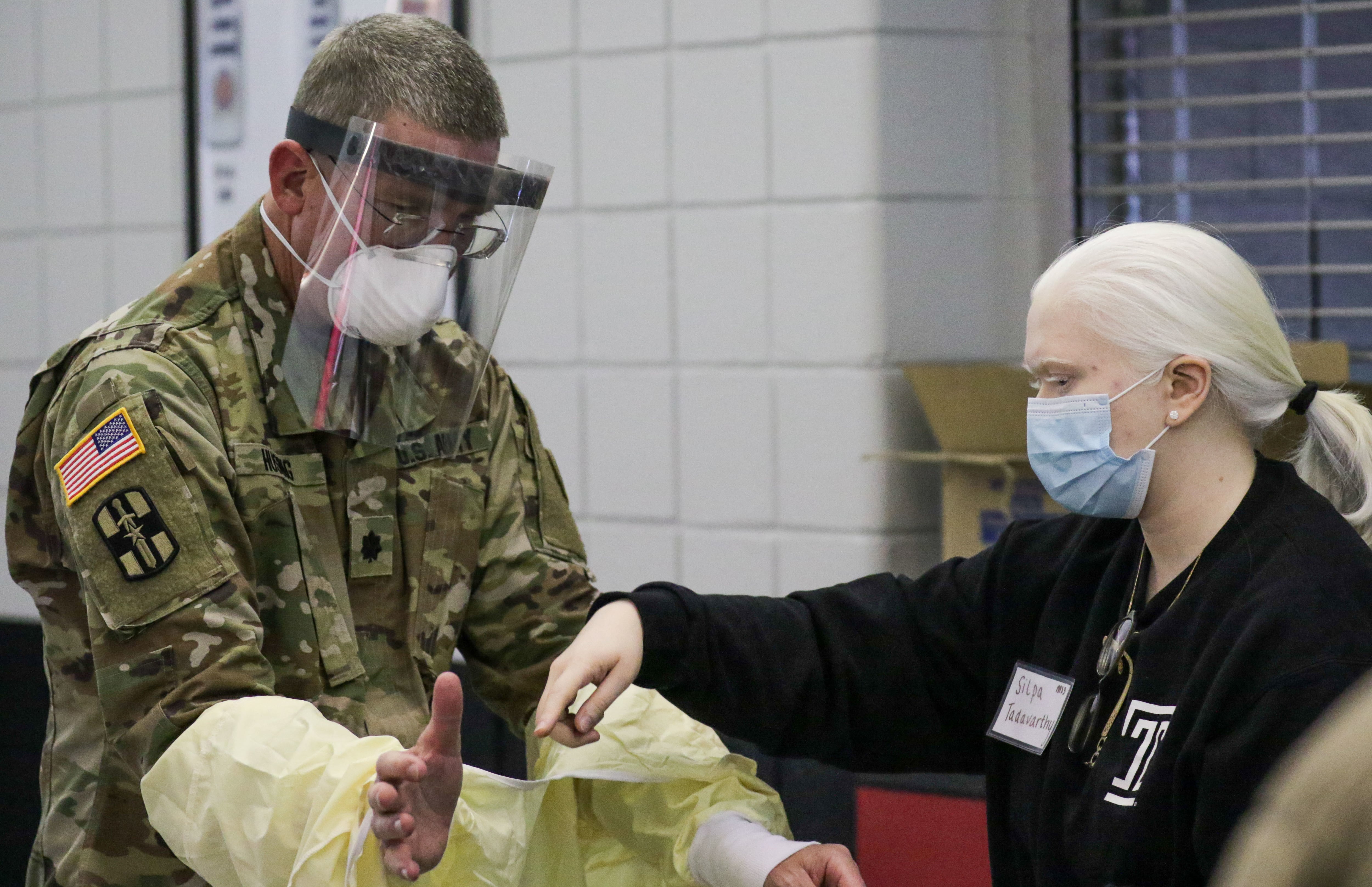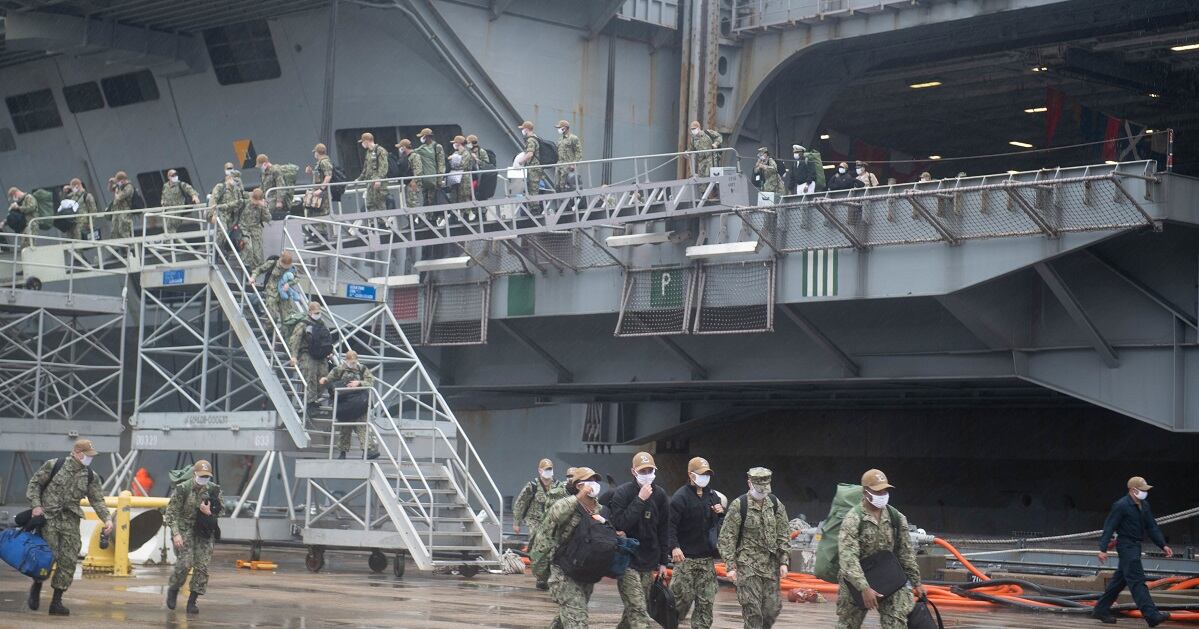Jabbing sailors in the fleet with the coming COVID-19 vaccines will happen “pretty quickly,” the Navy’s top officer said Wednesday.
Speaking to lawmakers during a hearing before the Senate Armed Services readiness and management support subcommittee, Chief of Naval Operations Adm. Mike Gilday said the sea service learned how to prioritize COVID testing this year and will apply those lessons to deciding who gets the shots first.
The U.S. Defense Department has yet to lay out its overall strategy for how servicemembers will be vaccinated, but Pentagon spokesman Jonathan Hoffman said in an email Wednesday that they are looking to provide an update in the coming days.
Gilday’s comments offered a first glimpse at what the servicemember vaccination effort will look like involving vaccines manufactured by Pfizer and Moderna, both of which are being reviewed for a U.S. Food and Drug Administration emergency-use authorization and could start being administered this month.
Ten U.S. locations across the Defense Department will receive the Pfizer vaccine, a medicine that is being shipped in GPS-tracked coolers because the vaccine must be stored at ultra-cold temperatures and is good for five days once it is thawed, Gilday said.
RELATED

“Every (U.S.) medical treatment facility in the military will receive that vaccine,” he said.
Outside of the continental United States, three to four overseas locations will receive Moderna’s COVID vaccine, which can be refrigerated for up to 30 days and doesn’t require the extreme temperatures of the Pfizer version, Gilday said.
Both vaccines require two shots taken a few weeks apart.
Health care workers and emergency and safety personnel will likely be the first servicemembers to receive the vaccine since they are most likely to come in contact with the infected, he said.
Strategic forces, including those involved in cyber missions and ballistic missile submarine crews will likely come next, as will units set to deploy in the coming months, according to Gilday.
“We have a good count on what those numbers are,” Gilday said. “If there’s anything we’re good at, it’s mass immunization of the military.”
“We feel pretty confident that once we get the vaccine distributed, that the vaccination piece, now that we have the prioritization well thought out, will happen pretty quickly,” he said.
Navy Secretary Kenneth Braithwaite told lawmakers that COVID-19 “caught the department off-guard, as it did the entire world.”
“The Navy in particular struggled through the early weeks of this” due to the close-quarter nature of ship and sub life, he said.
While a high-profile COVID outbreak aboard the aircraft carrier Theodore Roosevelt infected roughly a quarter of the 5,000-sailor crew this spring, Braithwaite credited Gilday and other leaders for taking mitigation steps that have prevented further outbreaks on a similar scale and allowed the Navy to continue operations.
“We have over 100 ships today that are at sea, deployed,” he noted, adding that “there are cases of COVID aboard some of those ships.”
CNO Gilday said this fall that while nearly 200 ships had suffered outbreaks, lessons learned helped to contain those outbreaks.
RELATED

“It’s an amazing story of resiliency to be able to isolate the issue, address the issue, through contract tracing, through all the protocols … social distancing, masks,” Braithwaite said. “When I go aboard a ship, everybody’s masked up.”
Still, such COVID mitigation protocols have strained the fleet and led to longer deployments for sailors, with several ships breaking the record for consecutive days at sea this year because port calls were deemed too risky as captains seek to maintain their COVID-free bubble.
Geoff is the managing editor of Military Times, but he still loves writing stories. He covered Iraq and Afghanistan extensively and was a reporter at the Chicago Tribune. He welcomes any and all kinds of tips at geoffz@militarytimes.com.




